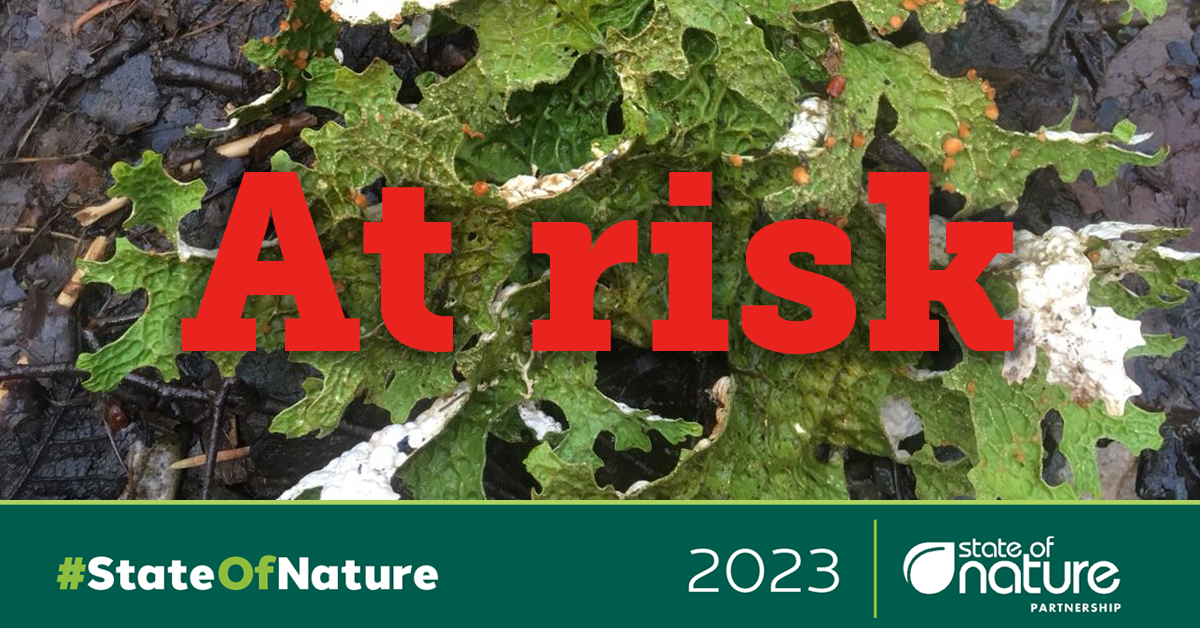
Please note these are personal thoughts and not a representation of BLS opinion. The State of Nature Report 2023 was published on 27th September. Our BLS database records were used to evaluate the overall state of lichens across England, Wales and Scotland. This gave a reassuring snapshot of lichen expansion in England with an average increase of 80%. It sounds like good news, although the reason that this figure sounds so good is that it’s a figure for England and not for the UK.
There are lichens that are expanding their distribution in the UK. In fact, the data shows that 63% of English lichen species are spreading. But that’s compared with only 50% in Wales and 34% in Scotland. (Unfortunately, our database doesn’t have enough data for Northern Ireland to suggest what is happening there.)
But which species are expanding? The report highlights that “Reductions in sulphur dioxide pollution are allowing some species to begin to recover.” But this recovery has been going on for some decades now and the data wasn’t questioned for how great a contribution this clean up is making on lichen expansion now. What we do know, is that lichens which grow well in conditions with high levels of pollution from nitrogenous compounds are still expanding. And we know, in England in particular, that new lichens arriving and staying in the UK due to climate change, are spreading up from the south of England at a remarkable rate. If we looked at the data for these some may have spread by 1000% or more!
But how much do we care about the lichens ‘weeds’ that spread rapidly if offered extra nitrogen in their environment? We have tons of them – literally! And how much do we need to care about those exciting-to-find newcomers? There are large populations of those in other countries.
Our data for the lichens which are rare in the UK would show that these are becoming rarer. Our montane species are contracting their range as they fail to cope with warmer winters. Our rainforest species are declining. Although a lot of our montane species will survive on the continent and elsewhere even if we lose them, some of our rainforest lichens are rare internationally. There isn’t much temperate rainforest across the globe. If those species are lost in the UK, they may vanish from the Earth – forever.
So, what are the main threats? The report highlights nitrogen-based pollution. It describes for Northern Ireland “ammonia levels above the critical ecological threshold for bryophytes and lichens across the entire country”. And the same for 69% of Wales. The report also highlights the pressures of climate change, land-use and land-management changes, and habitat fragmentation.
What is the important picture of lichen health in the UK? What else can our database show us?